To ensure success on all of its projects Visus adheres to the Software Development Life Cycle (SDLC) through its 4D process. This process and methodology have been proven to work exceptionally well over the years to build reliable solutions that meet your vision and needs.
Give me six hours to chop down a tree and I will spend the first four sharpening the axe.
The 4D Process
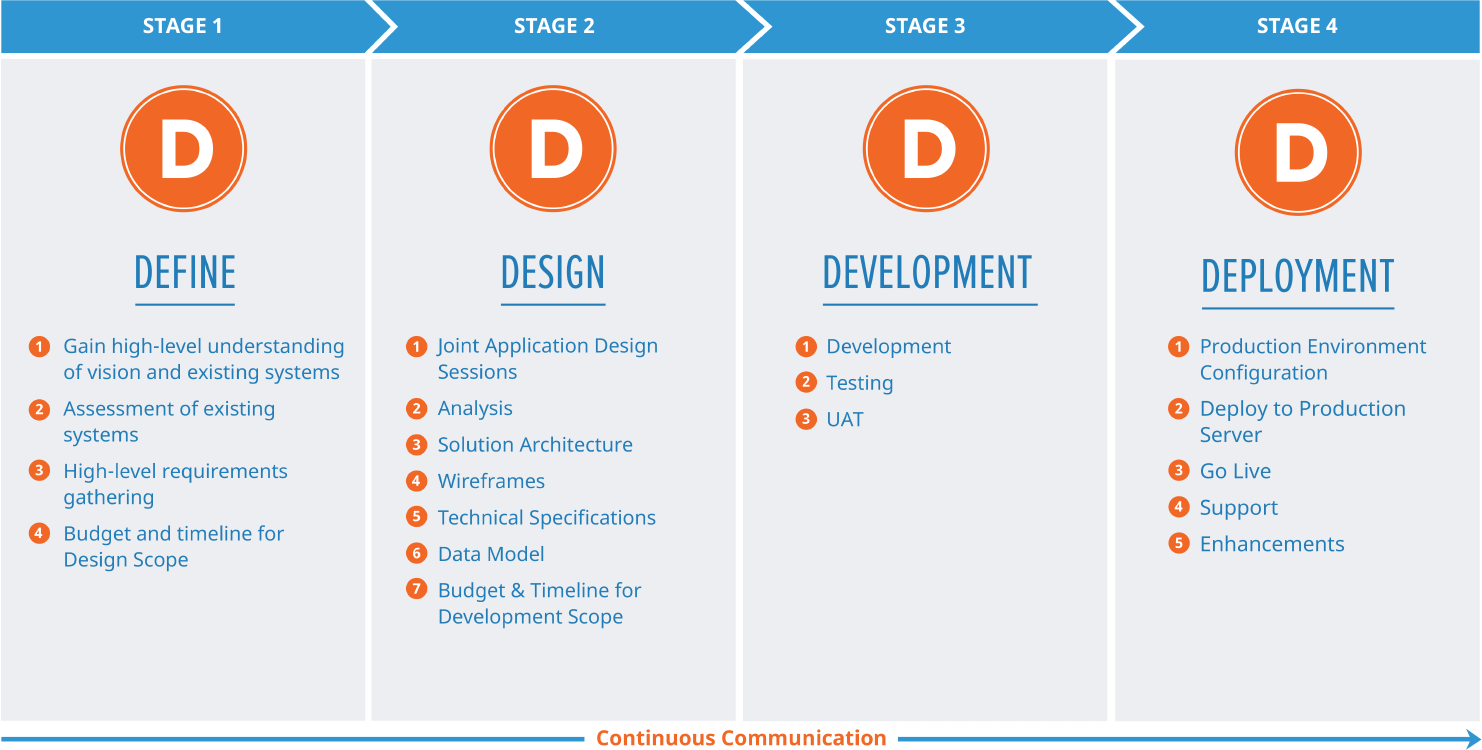
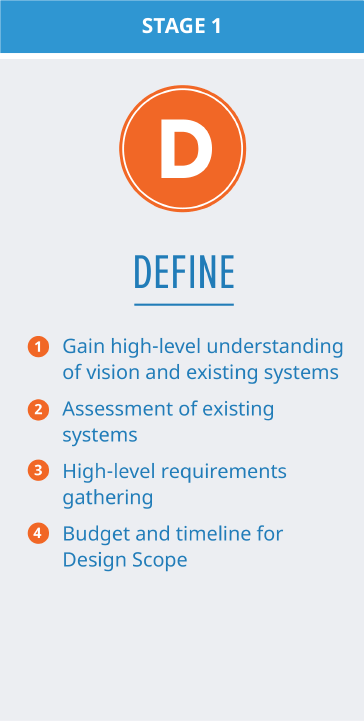
Define
The value of the Define phase is to gain a high-level understanding of the client’s vision and existing systems. This will help identify the technical and functional opportunities at a high-level to implement an elegant solution. It also provides insight into what is possible and what is not possible with existing systems integration and APIs prior to entering the Design Phase. The information resulting from the Define Phase will provide input for the Design Phase and the scope for the design efforts.
Think of Define as a napkin design. It outlines the vision and functionality at a high-level and provides the opportunity to analyze any integrations and APIs to be leveraged for the solution.
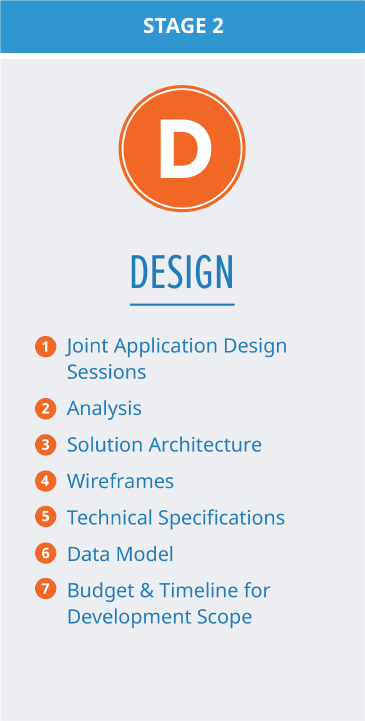
Design
Visus LLC is focused on delivering high quality, robust and elegant solutions to its clients. As such, the Design Phase is the most important phase of any software development project. It provides the foundation from which the application and supporting technology will be built.
The main purpose of the Design phase is to create mockups, wireframes and technical specifications. During this phase, the team performs analysis of any special functions, architects the overall solution, creates wireframes, and identifies all business rules and specific functionality required.
The output of the Design phase is a set of specifications that provide guidance and specifics to the development team. Without these specifications, a development team will make assumptions which do not necessarily align with the client’s needs and objectives. This is why developing any software product without specifications introduces a high amount of risk. At Visus we have learned through many years of development that the Design phase is essential to ensuring a successful project.
The ultimate goal of the Design Phase is to define all the pages, forms, and functionality clearly in a specifications document to meet the following objectives.
- To provide the client with clarity on what will be built.
- To provide developers with the specifications required to develop the product correctly and to the client’s expectations.
- To provide testers and the client’s team with a reference document of the functionality that should be tested and verified.
- To provide a guiding document that defines the scope, so as new ideas come up for features or functionality, they can be easily identified and added to the scope with the client’s approval.
The palest ink is better than the best memory.
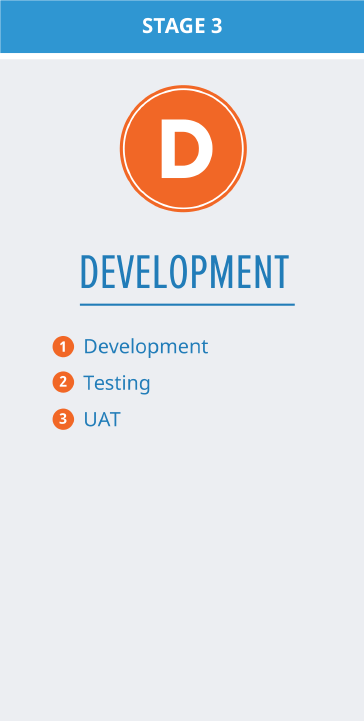
Development Phase
Once the Design Phase is completed, the requirements and specifications provide the clarity needed to measure the level of effort, budget and time required for developing the product. Experience has shown us that skipping the Design Phase raises the risk of failure dramatically for a project. Projected cost and timeline for the Development Phase is dependent on the Design Phase and will be provided at the completion of this SOW.
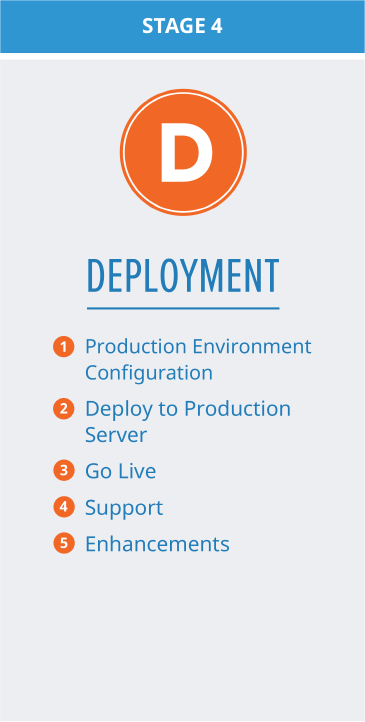
Deployment Phase
Once Development Phase is completed, the product is prepared to be deployed to production. This phase goes through the preparation and configuration of the production environment. History has taught us that the best days to deploy an application are on Monday and Tuesday. Doing so provides an opportunity for the support team and the client's team to address any challenges that may come up.
Once deployment is completed and the solution is live, the project enters a Support mode. In Support, new features, improvements and any required bug fixes are addressed by the support team.
Visus offers two options for support:
Option 1, is a monthly retainer of agreed upon hours where dedicated resources are focused on supporting the project with enhancements, new features and any bugs that may come up.
Option 2, is an hourly on-demand model where requests received are addressed on an hourly basis by an available resource.